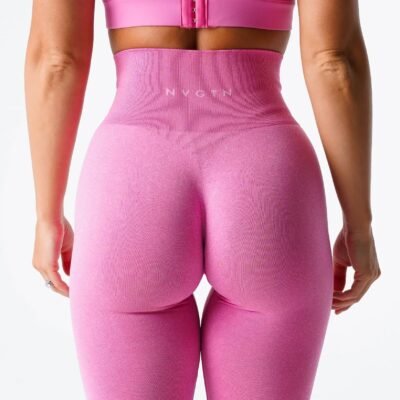Yoga clothing plays a crucial role in providing comfort, flexibility, and support during practice. With the rise in popularity of yoga, the apparel industry has introduced various types of yoga clothes, each with distinct features. Two common types are seamless yoga clothes and ordinary yoga clothes. Understanding the differences between these two can help you make an informed decision when choosing the right gear for your practice.
What Are Seamless Yoga Clothes?
Seamless yoga clothes are garments made using a specialized knitting technique that eliminates the need for seams. These clothes are produced on a circular knitting machine, which creates the fabric in a continuous tube, resulting in a smooth, seam-free finish. The design often includes varying levels of compression and ventilation zones, which are seamlessly integrated into the garment.
What Are Ordinary Yoga Clothes?
Ordinary yoga clothes, on the other hand, are made using traditional cut-and-sew methods. Fabrics are cut into specific shapes and then stitched together to form the garment. These clothes typically have visible seams along the sides, shoulders, and other parts of the clothing.
Differences Between Seamless and Ordinary Yoga Clothes
- Construction and Design:
- Seamless Yoga Clothes: As the name suggests, seamless yoga clothes are made without any visible seams. The seamless construction allows for a more uniform fit, often incorporating compression zones and ventilation areas directly into the fabric.
- Ordinary Yoga Clothes: These garments are assembled using traditional sewing methods, with multiple seams visible along the edges. The design is typically simpler, relying on stitching to join different fabric pieces.
- Fit and Comfort:
- Seamless Yoga Clothes: The lack of seams provides a smooth, second-skin fit that reduces chafing and irritation. The stretchy material conforms to the body’s contours, offering excellent flexibility and freedom of movement.
- Ordinary Yoga Clothes: While ordinary yoga clothes can also offer a comfortable fit, the presence of seams can sometimes cause discomfort, especially during intense movements or extended wear. However, well-constructed garments with flatlock seams can still provide a smooth fit.
- Durability:
- Seamless Yoga Clothes: The seamless construction can enhance the durability of the garment, as there are no seams that can come undone or fray. The fabric is often more resilient to wear and tear.
- Ordinary Yoga Clothes: The durability of ordinary yoga clothes largely depends on the quality of the stitching and fabric. Seams are often the first point of failure in garments, especially if they are not reinforced or if the fabric is of lower quality.
Advantages and Disadvantages
Seamless Yoga Clothes
Advantages:
- Comfort: The absence of seams reduces the risk of chafing, making seamless yoga clothes ideal for extended practice sessions.
- Fit: Seamless garments provide a snug, compressive fit that moves with the body, enhancing flexibility and range of motion.
- Durability: Seamless construction often leads to longer-lasting garments, as there are no seams to weaken or tear.
- Aesthetic Appeal: Seamless yoga clothes often have a sleek, modern look, with clean lines and a smooth finish.
Disadvantages:
- Cost: Seamless yoga clothes are typically more expensive than ordinary yoga clothes due to the specialized manufacturing process.
- Limited Design Options: The seamless knitting process can limit the complexity of designs and patterns that can be achieved, leading to fewer style variations.
- Breathability: Some seamless fabrics may not be as breathable as traditional fabrics, depending on the material used.
Ordinary Yoga Clothes
Advantages:
- Affordability: Ordinary yoga clothes are generally more affordable than their seamless counterparts, making them accessible to a wider range of consumers.
- Design Variety: Traditional cut-and-sew methods allow for a broader range of styles, colors, and patterns, offering more choice for consumers.
- Breathability: Many ordinary yoga clothes are made from breathable materials that provide good ventilation during practice.
Disadvantages:
- Seam Irritation: Seams can cause discomfort, especially during dynamic movements or in high-friction areas.
- Durability Concerns: Seams are often the weakest points in garments and can fray or come undone over time, reducing the lifespan of the clothing.
- Fit: Depending on the cut and stitching, ordinary yoga clothes may not provide as precise a fit as seamless options, potentially leading to less flexibility and comfort.
Conclusion
Both seamless yoga clothes and ordinary yoga clothes have their own unique advantages and disadvantages. Seamless yoga clothes excel in providing comfort, durability, and a snug fit, making them ideal for those who prioritize these qualities in their yoga practice. On the other hand, ordinary yoga clothes offer affordability, variety, and breathable options, making them a versatile choice for different types of yoga practitioners. Ultimately, the best choice depends on your personal preferences, budget, and the specific demands of your yoga practice.






